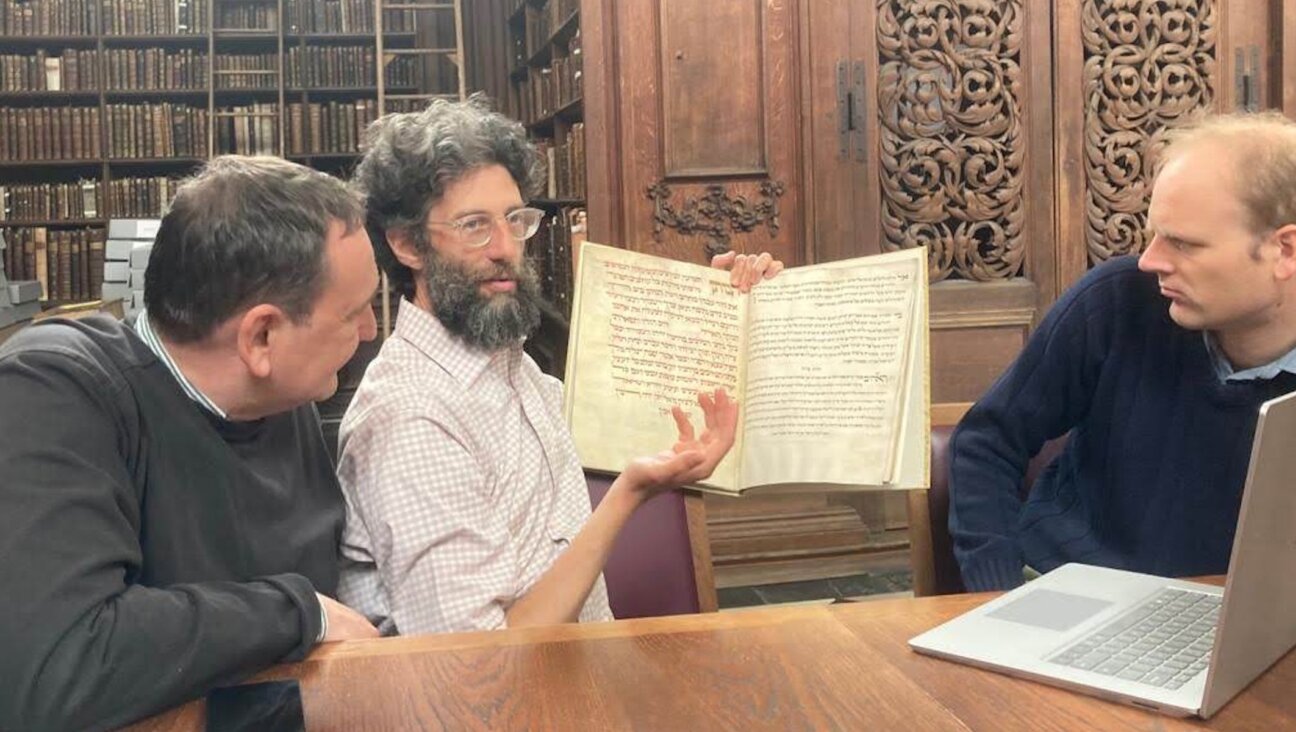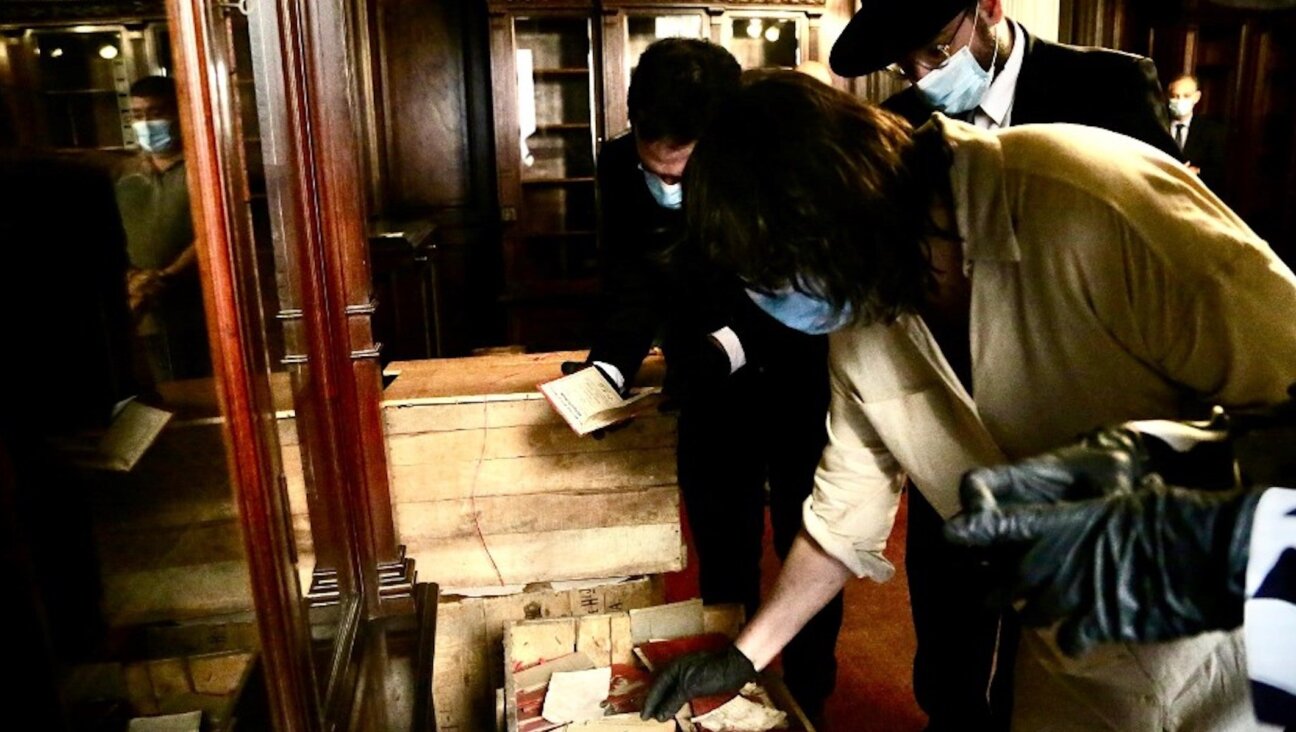Balzac and the Hebrew Tutor

Tracing Old Testament influence on modern literature is a never-ending study, but “The Sign and the Seal: Literary Variations on the Song of Songs” (Le Signe et le sceau: Variations littéraires sur le Cantique des Cantiques) by Dominique Millet-Gérard, out last August from La Librairie Droz in Geneva, offers precious new insights on the subject.
Nobel-Prizewinning poet Paul Claudel was long fascinated and mystified by the Song of Songs. In 1938, Claudel wrote to a friend, puzzling over certain lines such as “Thy cheeks are beautiful as the turtledove’s.” “A turtledove’s cheeks?” asked Claudel, clearly baffled: “All this needs to be seriously meditated and explicated.” A 1954 book, “Paul Claudel Examines the Song of Songs” was the result.
The philosopher Jacques Maritain, who called Shir ha-Shirim the “loveliest of all poems,” was similarly inspired. But, perhaps the most startling use of the biblical song in French literature is that of 19th century novelist Honoré de Balzac, the title of whose 1835 novel, “Le Lys dans la Vallée” (The Lily of the Valley) was inspired by the Song of Songs.
Balzac’s friend the French Hebraist Samuel Cahen was an expert who in 1851 published an 18-volume dual-language Tanakh in French and Hebrew. Cahen taught rudiments of Hebrew to Balzac, who in 1843 wrote to his beloved Évelyne Hańska, romantically citing a “famous Hebrew word” which he spelled as “Lididda,” explaining:
It means from the beloved man; to the beloved woman; from the beloved woman; the beloved man; the beloved woman, and even, Cahen informed me, both at the same time, so full of meaning is this magnificent Eastern language that all the tender words of all the modern languages cannot convey an idea of this sublime and primordial word: ‘Lididda’ which comprises notions of paternity, maternity, filiality, love, divine sweetness, paradise etc., and celestial voluptuousness.
Balzac notes that all this information came from the “Rothschild children’s tutor,” which was indeed one of Cahen’s professional responsibilities. Further inspired by the potential amorous power inherent in Hebrew as he understood it, Balzac had a malachite box specially constructed with the — inadvertently incorrect — Hebrew words “Hava lidida” (intended to signify “Eve to her Beloved”) inscribed on it, to store letters which he received from Eva Hanska, the first lady of his life.
Doubtless influenced in part by Cahen and the Song of Songs, Balzac’s “fiction is less egregiously anti-Semitic than his personal writings,” according to Richard S. Levy’s 2005 “Antisemitism: A Historical Encyclopedia of Prejudice and Persecution.” Which is yet another reason to enjoy Shir haShirim!
The Forward is free to read, but it isn’t free to produce

I hope you appreciated this article. Before you go, I’d like to ask you to please support the Forward.
Now more than ever, American Jews need independent news they can trust, with reporting driven by truth, not ideology. We serve you, not any ideological agenda.
At a time when other newsrooms are closing or cutting back, the Forward has removed its paywall and invested additional resources to report on the ground from Israel and around the U.S. on the impact of the war, rising antisemitism and polarized discourse.
This is a great time to support independent Jewish journalism you rely on. Make a gift today!
— Rachel Fishman Feddersen, Publisher and CEO
Support our mission to tell the Jewish story fully and fairly.
Most Popular
- 1

Fast Forward Ye debuts ‘Heil Hitler’ music video that includes a sample of a Hitler speech
- 2

Opinion It looks like Israel totally underestimated Trump
- 3

Culture Is Pope Leo Jewish? Ask his distant cousins — like me
- 4

Fast Forward Student suspended for ‘F— the Jews’ video defends himself on antisemitic podcast
In Case You Missed It
-

Fast Forward For the first time since Henry VIII created the role, a Jew will helm Hebrew studies at Cambridge
-

Fast Forward Argentine Supreme Court discovers over 80 boxes of forgotten Nazi documents
-

News In Edan Alexander’s hometown in New Jersey, months of fear and anguish give way to joy and relief
-

Fast Forward What’s next for suspended student who posted ‘F— the Jews’ video? An alt-right media tour
-
Shop the Forward Store
100% of profits support our journalism
Republish This Story
Please read before republishing
We’re happy to make this story available to republish for free, unless it originated with JTA, Haaretz or another publication (as indicated on the article) and as long as you follow our guidelines.
You must comply with the following:
- Credit the Forward
- Retain our pixel
- Preserve our canonical link in Google search
- Add a noindex tag in Google search
See our full guidelines for more information, and this guide for detail about canonical URLs.
To republish, copy the HTML by clicking on the yellow button to the right; it includes our tracking pixel, all paragraph styles and hyperlinks, the author byline and credit to the Forward. It does not include images; to avoid copyright violations, you must add them manually, following our guidelines. Please email us at [email protected], subject line “republish,” with any questions or to let us know what stories you’re picking up.
















